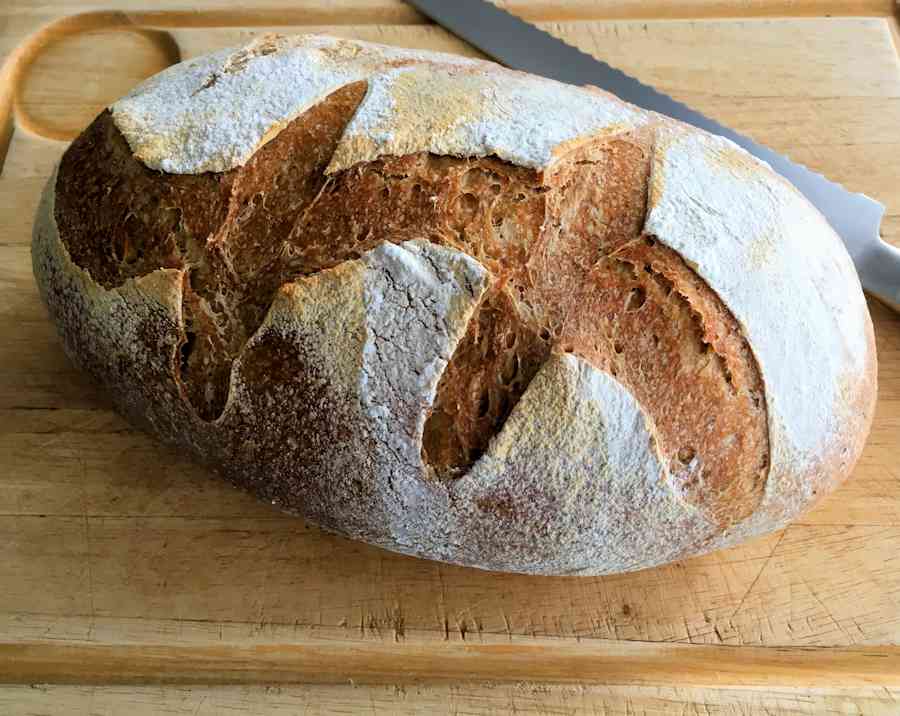Always reserve a chunk of dough when making your bread. It is called 'old dough' or pâte fermentée and is one of the oldest and most reliable methods of making sourdough loaves.

Sourdough karma
Wild yeast doesn’t like my new kitchen. Either that or I have lost my sourdough mojo.
Neither of those options pleases me much; in fact I’d be gutted if either proved true. But the fact is, I’ve struggled to create a decent sourdough starter since the building works on the extension to my kitchen finished and the dust settled.
I still buy the same flour as before. The water comes from a shily new tap but the same pipes bring it to my home.
The airing cupboard which used to double up as the proofing chamber is gone, but I now have the central heating mainframe/manifold/weird machinery cupboard now which is constantly warm.
And I even have a dough proving programme in my new oven.
My recent sourdough story
The first attempt, a starter which I nonchalantly fed for four days, thinking it would be a doddle like it used to be, was a stillbirth. Not a single bubble.
The second was given filtered water. It showed faint signs of life on day three and died on day four.
The following attempt was made using a different brand of flour.
The one after that was a rye sour. Nothing worked.
A dour vision of life without sourdough in it was starting to appear before me.
Sourdough epiphany
Then (Doh! or even: Dough!) I remembered the ‘old dough’ method which uses fermented sourdough instead of starter.
I made a tortured pain de campagne with starter number five or six, more persuading myself that it was fermenting than believing it really did.
I cut a chunk and made it join the failed starters jar collection in the fridge.
Old dough makes sourdough
It worked. It needed a long cold proof and a long final rise but it made a properly tasty loaf, unmistakably sourdough.
Kudos here to Sourdough Baker whose detailed instructions were invaluable.
The chunk of dough first needs to ferment - it's called pâte fermentée for a reason. In a tub or a jar, not sealed super tightly, mixed with warm water it needs a week in the fridge to bubble up: the more bubbles, the better fermentation.
Long proof, long rise
The first step is the first dough or ferment, mixed up roughly and left to rest for about an hour.
Mixing the main dough follows and it's important to add the salt at the very end - after a chunk is reserved for the next loaf, of course. Once salted, it then hibernates in the fridge for twenty-four hours.
The following day it's shaping, the final rise and baking: ideally in damp heat on a baking stone, but a heavy baking tray will do the job too.
The baking should be at the temperature decreasing by 20C every quarter of an hour. The initial blast of heat spurs the rise and the gradually less hot conditions ensure perfect crust.
It is tasty, it has delightful crust and the crumb is as chewy as it should be.
The only really difficult thing is remembering to reserve a piece of dough for the future loaves.
More sourdough recipes
German souls bread: Seelen means ‘souls’ in German, and in Schwabia it means fantastically tasty spelt sourdough bread rolls, rustic and completely artisan.
Garlic, cheese and tomato pull apart sourdough bread. The perfect party bread, these sourdough dinner rolls are baked together to tear and share.
Sourdough no knead bread on sourdough culture made with pineapple juice: the best of all worlds. It’s a healthy no yeast sourdough but there’s no need to knead. Bread couldn’t be better or easier than this.
Tartine style sourdough country bread including recipe for starter made from scratch. I promise: it's absolutely worth the time and the effort.